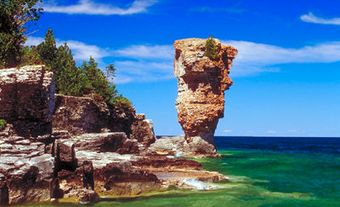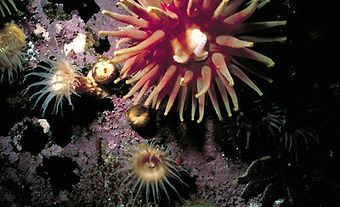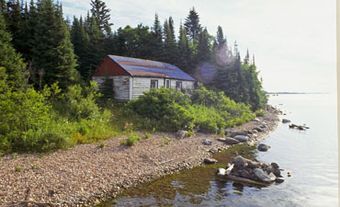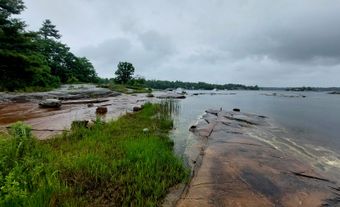Georgian Bay Islands National Park (established 1929, 12.7 km2) comprises 59 islands off the southeast coast of Georgian Bay. The national park includes the world’s largest freshwater archipelago. One notable location is Beausoleil Island, the largest island of the archipelago.
Natural History
Many of these islands, part of the Canadian Shield, are stark and windswept, and inspired many Group of Seven paintings. Other islands have dense deciduous forests, contributing to the overall ecological diversity of the park. Beausoleil island has thicker soil and a rich hardwood forest in the south and rock barrens in the north, best exemplifying this diversity.
Although small, the park protects several at-risk species. Beausoleil Island, the largest park island, maintains a large population of Eastern massasauga rattlesnakes, eastern Canada's only venomous snake. In fact, the park holds the title of having the greatest diversity of reptiles and amphibians of any Canadian national park. Today, 33 different species of reptiles and amphibians live in Georgian Bay Islands National Park. Some notable species include the Eastern foxsnake, Eastern hog-nosed snake and spotted turtle. Several rare plant species are also found in the park, including the endangered forked three-awned grass.

Human History
The area that is now Georgian Bay Islands National Park has been home to various Indigenous peoples for thousands of years. Beausoleil Island National Historic Site, in particular, has over 5,000 years of Indigenous history. Notably, in the mid-19th century, the island was a traditional stopping place and seasonal campsite for the Anishinaabeg.
Beausoleil Island itself was named after Louis Beausoleil, a Métis settler who, in 1819, had a homestead on the island’s southern tip.

Facilities
The area has long been famous as a boating mecca. The park has nine docking areas, and campgrounds on Beausoleil Island, accessible by boat only. The National Park also offers various trails for hiking.


 Share on Facebook
Share on Facebook Share on X
Share on X Share by Email
Share by Email Share on Google Classroom
Share on Google Classroom



